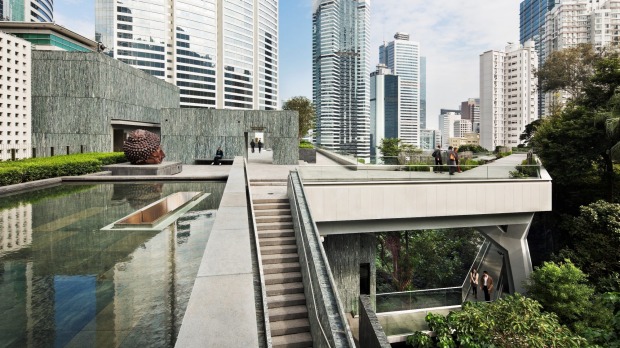
It is lunchtime on a balmy spring Saturday and Hong Kong's PMQ, the former Police Married Quarters recently reborn as a creative design hub, is buzzing. There is a market in the central courtyard and shoppers graze the four floors of shops and studios that showcase the best of the city's young design talent in everything from fashion to food.
A few years ago the building sat derelict, occupying prime land in the heart of Hong Kong's fashionable Soho. The last of the police moved out in 2000 and, paralysed by indecision, the government allowed the building to decay.
Its reincarnation is a shining example of how Hong Kong has finally woken up to its heritage with a wave of projects breathing new life into the city's historic buildings. Less than a decade ago, Hong Kong thought nothing of swinging the wrecking ball at some of its most iconic landmarks, most famously the Star Ferry Pier and Clock Tower. Both were demolished in 2006 to make way for more land reclamation.
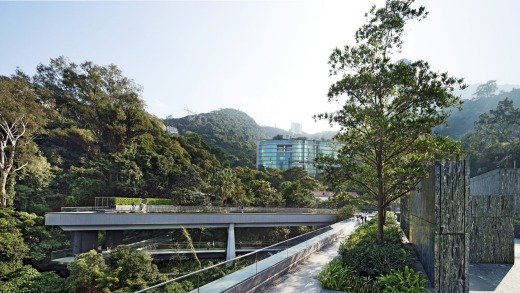
The move sparked mass protests, and within months, the government announced an extensive conservation policy. One year later, nine key sites were identified for restoration as part of its "Conserving Central" policy.
PMQ is the first to complete its renovation. Although the building isn't particularly old – it was built in 1951 – the site is socially significant. It was the location of the Central School (circa 1889), the first educational establishment to provide a Western education to Chinese students in Hong Kong. The school was demolished after being damaged in World War II and the PMQ was built on the site – 148 single and 28 double rooms built around a large courtyard.
William To, PMQ's creative director, admits it was a tricky architectural design to work with, particularly as the uniform size of the rooms had to be preserved. In the end though, they work perfectly as mini showrooms for the 100 or so designers who have set up shop there.
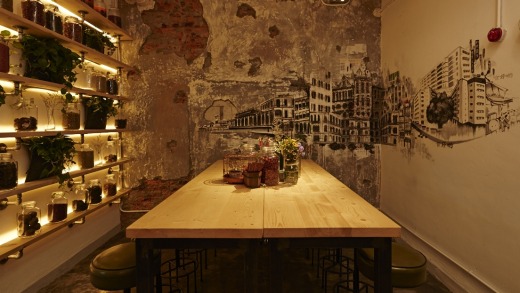
The project is a partnership between the government and a local NGO. The business plan relies on tenants on the ground floor paying commercial rent to subsidise the rent of the fledgling designers upstairs.
The whole place has a cool industrial vibe. As well as shops, there are restaurants, cafes, a fourth-floor roof garden and a giant glass cube (the only new addition to the building) for exhibitions and functions.
Meanwhile, most of Hong Kong's colonial architecture is long gone, demolished to make way for skyscrapers. The buildings that have survived have traditionally been used as uninspiring museums or government offices, but that is changing.
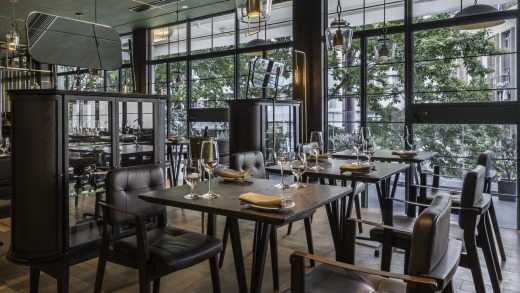
The Pawn, a chic and much-loved bar and restaurant, was one of the first heritage sites to be made available for commercial use. Its defining feature is the huge colonial-style covered verandah that runs along the second and third floors of the four-storey building, creating a near-perfect place for drinks or dinner in the beating heart of the city.
It's an architectural gem among the Johnston Road sprawl of new buildings and chain stores. While the building may look grand, it's a standard tenement shophouse, built in all southern Chinese cities in the 19th century and known locally as tong lau.
Alan Lo, the co-founder of the Press Room Group, which runs The Pawn, first saw the building in 2007. It was the authenticity of the streetscape that struck him. Trams rattle by metres from the balcony and the restaurant looks out on to a beautifully imperfect Wan Chai streetscape – including the urban soccer pitch and a rubbish processing depot.
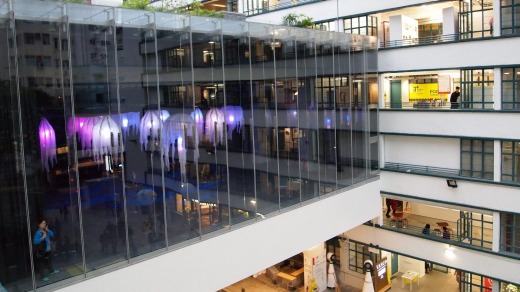
At the time it was owned by the Urban Renewal Authority which listed it as a heritage conservation site and supervised its restoration. Lo took over the lease and The Pawn opened in 2008.
It was a hit from the start, with its comfy mismatched vintage vibe, but after five years Lo decided it was time for a refresh. The colonial facade is still intact, but it has just reopened with sleek new interiors and a menu by Michelin-starred British chef Tom Aikens.
Colonial architecture purists should make the scenic trip to Tai O, a stilted fishing village on Lantau, about 90 minutes from Central. Here, the old police station has been beautifully restored into the Tai O Heritage Hotel. It's a whitewashed building hidden among greenery on a peaceful headland with views out to sea.
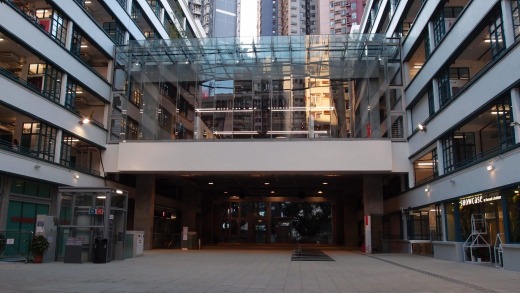
The police station was built by the British in 1902 to guard the western border between China and Hong Kong, but closed in 2002 and abandoned until the not-for-profit Hong Kong Heritage Conservation Foundation took it over as part of the government's "revitalising historic buildings through partnership scheme". It reopened in 2012 as a nine-room boutique hotel with a small restaurant serving basic Western and Chinese dishes.
The place is crammed with historical detail: the original police reporting room is the reception area, complete with holding cells and the window shutters are still pitted with bullet marks from a long-ago skirmish inside. There are wide verandahs to mask the subtropical temperatures, original wooden floorboards and two guard towers.
Back on Hong Kong island, the Asia Society headquarters is the gold standard example of colonial heritage restoration. It is tucked away on the hillside in a mass of greenery above Admiralty in Central.
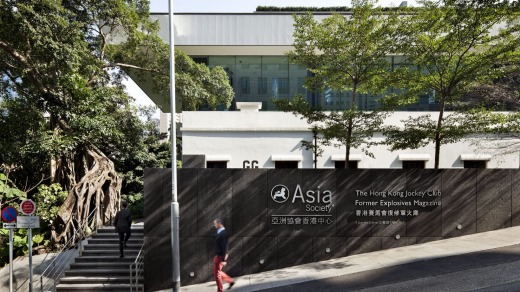
A group of mid-19th century Grade 1 listed buildings (thought to be the second oldest colonial buildings in Hong Kong), it was used by the British military for explosives and ammunition production and storage. The site was passed back to the government after the 1997 handover and the abandoned buildings fell into disrepair.
Salvation came in the shape of the Asia Society, a global NGO devoted to developing cultural and business links between Asia and the US, which was looking for its own headquarters in Hong Kong. After years of negotiations, the $US50 million ($67 million) centre finally opened in 2012.
The ex-munitions buildings are a tranquil oasis with theatre, art gallery, offices and function rooms, all linked by an ingenious Z-shaped bridge, designed to protect the habitat of the fruit bats that live in the surrounding jungle. The serene roof garden has unique views through the greenery over Hong Kong's skyline and there is a good restaurant, Ammo.
Visitors are welcome to wander the tranquil site after registering at reception or there are free guided tours at weekends. There is also a vibrant program of cultural events, including art exhibitions, lectures and performances, many of them free.
Next year will see the unveiling of Hong Kong's most ambitious heritage restoration project to date, the vast colonial Central Police Station complex in the middle of lively Hollywood Road in Central. It is being transformed into a centre for heritage, contemporary art and leisure.
It's a huge task. The rambling 1.3-hectare site incorporates a cluster of 16 historically significant buildings, including the old Central Police Station, Victoria Prison and the Central Magistracy. "The site is unique in that it was a one-stop-shop," says CPS director Euan Upston, who oversaw the refurbishment of Sydney's Art Deco Museum of Contemporary Art. "You could be arrested, charged and imprisoned without leaving the walls."
If the vision comes off, visitors will be able to browse the contemporary art gallery, learn about the site's history, relax in one of the restaurants and bars or enjoy the huge public spaces that were once the police parade grounds and prison exercise yard.
It's a joint project between the government and the Hong Kong Jockey Club Charities Trust. No expense has been spared in calling in the experts: UK conservation architects Purcell is advising and award-winning Swiss firm Herzog & de Meuron (whose CV includes London's Tate Modern and Beijing's National Stadium) has designed the two new buildings, a contemporary art space and a slick auditorium.
www.discoverhk.com
Cathay Pacific, Qantas and Air Asia all fly direct from Melbourne and Sydney to Hong Kong. See www.cathaypacific.com; www.qantas.com.au; www.airasia.com.
Mandarin Oriental (5 Connaught Road, Central) is the luxe option for perfect position, great food, bars and spa. Rooms start at $850. See www.mandarinoriental.com/hongkong/
Ovolo has five good value hotels in hip central neighbourhoods with free Wi-Fi, , breakfast and happy hour. Rooms start at $850 a night for online prepaid bookings. See ovolohotels.com
PMQ, 35 Aberdeen Street, Central, see pmq.org.hk. The Pawn, 62 Johnston Road, Wan Chai, see thepawn.com.hk. Asia Society Hong Kong Centre, The Hong Kong Jockey Club Former Explosives magazine, 9 Justice Drive, Admiralty, see www.asiasociety.org/hong-kong. Central Police Station; Hollywood Road, Central, see www.centralpolicestation.org.hk. Tai O Heritage Hotel, Tai O, Lantau, see www.taioheritagehotel.com
Isola, Level 3, IFC mall (gaiagroup.com.hk) for good Italian with harbour views, chic all-white interiors and fab outdoor terrace; Zuma (The Landmark, 15 Queens Road, Central, see zumarestaurant.com) for standout Japanese and chilled bar. Sir David Tang's China Club (13-15 Floor, Old Bank of China Building) serves the best dim sum amid traditional Shanghaiese clubhouse decor. Members only but a good concierge will get you in.
Murray House: Charming colonial building moved brick by brick from Central to Stanley waterfront in 1982. Originally officers' quarters for the British Army at Murray Barracks, it's now home to a selection of mediocre restaurants BUT the huge wraparound verandah is divine with stunning views over the bay. Skip the food and go for sunset drinks. See www.hongkongstanleymarket.com
Hong Kong Baptist University School of Chinese Medicine Lui Seng Chun: Check your yin and yang in a beautifully restored 1930s Chinese shophouse. 119 Lai Chi Kok Road, Mong Kok. See www.scm.hkbu.edu.hk/lsc/en
Flagstaff House Museum of Teaware: Formerly the residence of the commander of British forces, it's now a slightly staid ode to tea-drinking culture but worth a look as the oldest colonial building in the city. Lovely park setting too. Hong Kong Park, 10 Cotton Tree Drive. See www.hk.art.museum
The Blue House: Quirky four-storey house built in 1920s with mix of Chinese and Western architectural features. The bright blue building is still lived in (despite the lack of flushing toilets) but also houses the tiny Wan Chai Livelihood Museum which replicates past life in the area's tenement buildings. 72 Stone Nullah Lane, Wan Chai. See www.discoverhongkong.com
North Kowloon Magistracy Building now Savannah College Art and Design: One of the city's only surviving neo-classical style buildings and Hong Kong's busiest magistracy until it closed in 2005. Faithfully restored by private art and design college SCAD, it's open to the public daily for historical tours. 292 Tai Po Road, Sham Shui Po; see www.scad.edu.hk